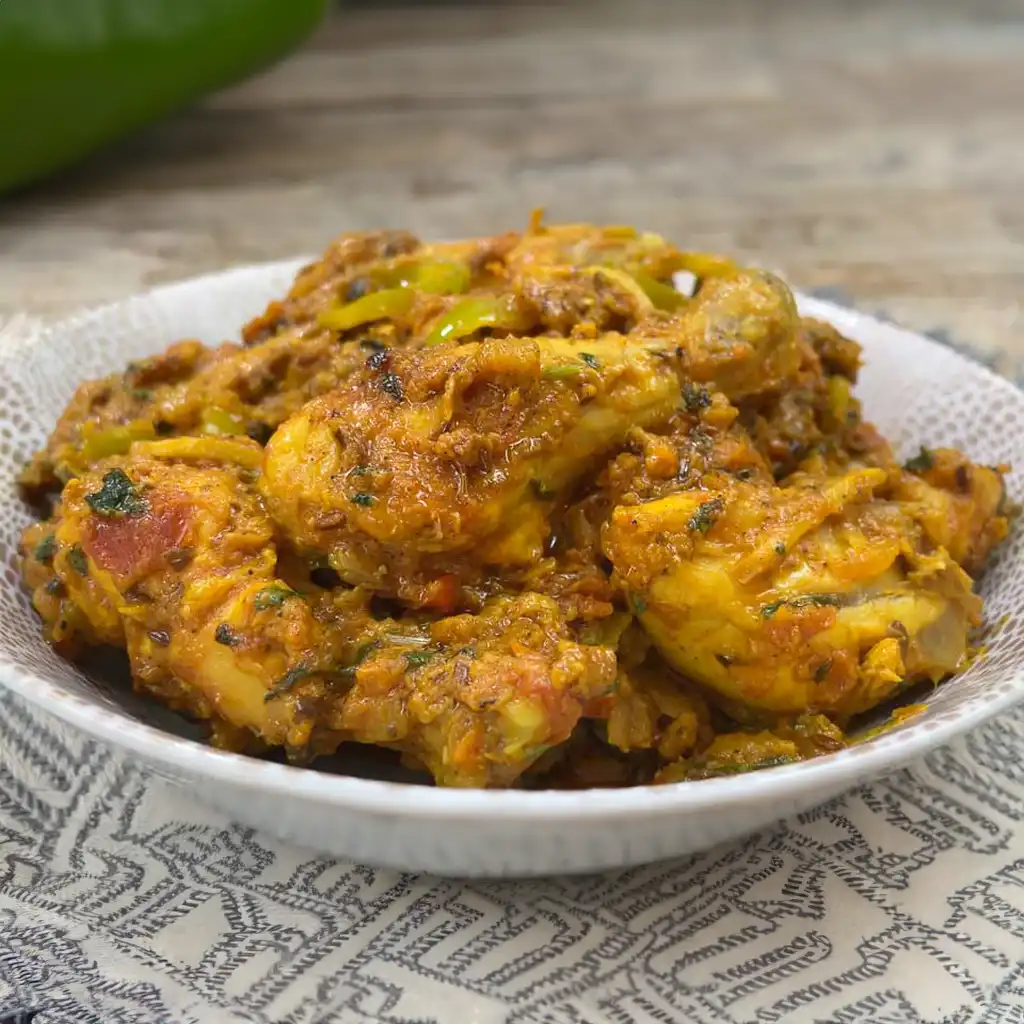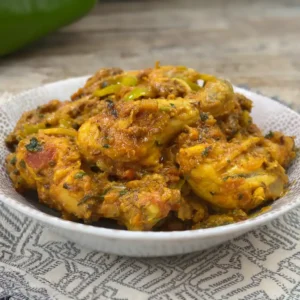
Chicken Karahi, a beloved dish in South Asian cuisine, is renowned for its rich flavors and aromatic spices.
Originating from the Punjab region, this dish has become a staple in households and restaurants alike, cherished for its vibrant taste and easy preparation.
Despite its exotic name, Chicken Karahi is surprisingly simple to make, making it an ideal choice for both novice and seasoned cooks.
The heart of Chicken Karahi lies in its ingredients, each contributing to its distinct flavor profile. Tender chicken pieces, onions, and tomatoes form the base, while a blend of ginger and garlic paste infuses the dish with depth and warmth.
Spices like chili powder, black pepper, and turmeric add a kick of heat and a hint of earthiness, perfectly complemented by the fragrant garam masala. Yogurt lends a creamy texture and balances the bold flavors, creating a harmonious medley of tastes.
Expert Tip: Marinate the chicken in yoghurt and spices for added tenderness and flavor.
Oil: Provides the base for cooking and adds richness to the dish.
Chicken: Serves as the protein component, becoming succulent and flavorful as it cooks.
Onions: Offer sweetness and texture, caramelizing to enhance the overall taste.
Tomatoes: Contribute acidity and juiciness, forming the sauce’s foundation.
Ginger Paste and Garlic Paste: Infuse the dish with aromatic notes and depth of flavor.
Spices: Elevate the taste profile, adding warmth, heat, and complexity.
Yogurt: Adds creaminess and balances the spices, creating a luscious sauce.
Coriander, Ginger, Green Chilies, Dried Fenugreek, Cumin Seeds: Enhance the dish with fresh aroma, vibrant color, and a touch of bitterness, culminating in a tantalizing sensory experience.
Expert Tip: Toasting whole spices like cumin seeds before adding them to the curry enhances their aroma and flavor.
Expert Tip: For a creamier texture, blend a portion of the cooked curry before adding the chicken for a velvety sauce.
Chicken Karahi can vary in spice level depending on personal preference. Adjust the amount of chilli powder and green chillies to suit your taste.
Yes, boneless chicken can be used in this recipe. Adjust the cooking time accordingly as boneless chicken cooks faster than bone-in.
Yes, Chicken Karahi tastes even better the next day as the flavors have had time to meld. Simply reheat gently on the stovetop before serving.
Chicken Karahi pairs well with naan bread, roti, rice, or even crusty bread. Accompany with your favorite chutneys or pickles for added flavor.
Yes, Greek yoghurt can be used as a substitute for regular yoghurt. Keep in mind that Greek yoghurt is thicker, so adjust the consistency of the curry accordingly.
Here are some more recipes for you to enjoy! If you my recipes don’t forget to rate and leave a comment.
If you have any recipe suggestions, please do not hesitate to ask me. A great way to stay in contact with me is through Instagram, Facebook, Twitter and YouTube. Don’t forget to tag me @CookwithNabeela in your recipe photos!

Subscribe now to receive my latest recipes directly in your inbox. Stay up-to-date and never miss out!

I love to cook! I want to share with you my favourite, delicious family-friendly recipes. I want to inspire you to create fantastic food for your family every day.
Latest comments (4)
When do I add the cumin seeds?
You can add the cumin seeds towards the end along with the methi for a delightful flavour combination. Enjoy your cooking!
Great recipe Highly rated!! Thank you!
You’re welcome! I’m glad to hear that you found the recipe to be enjoyable. Bon appetit!